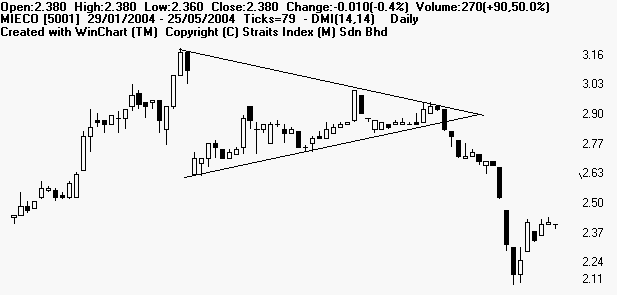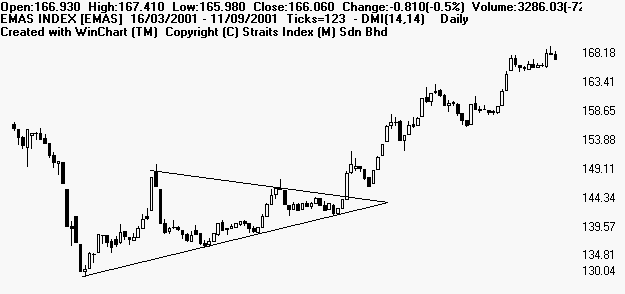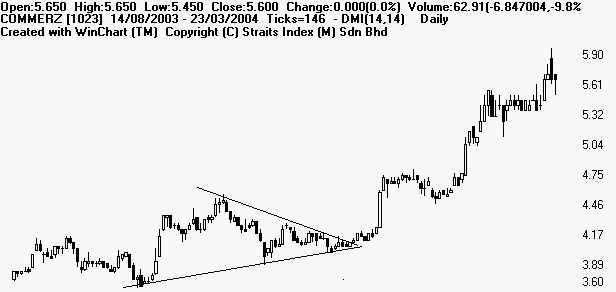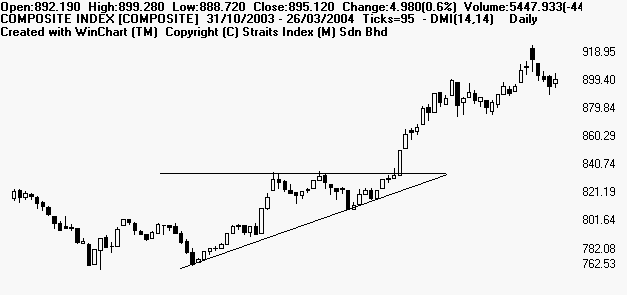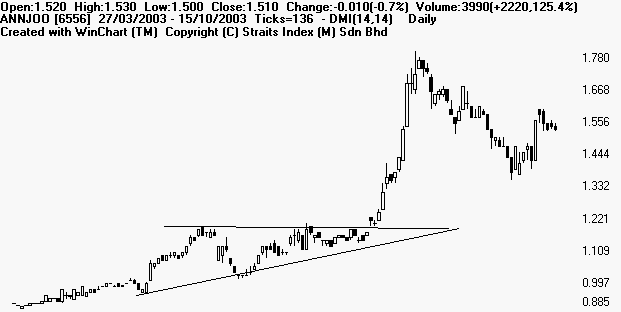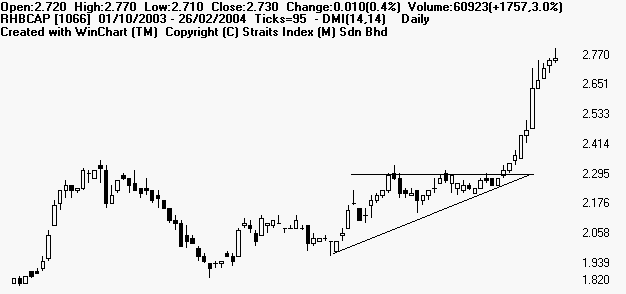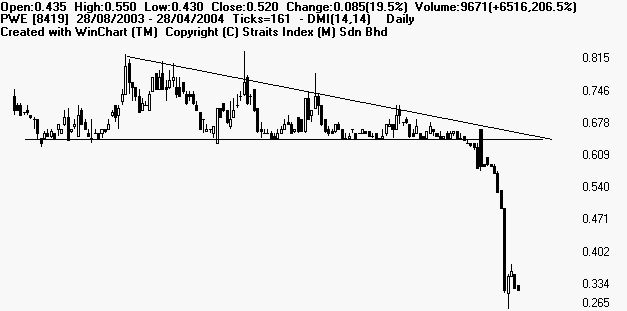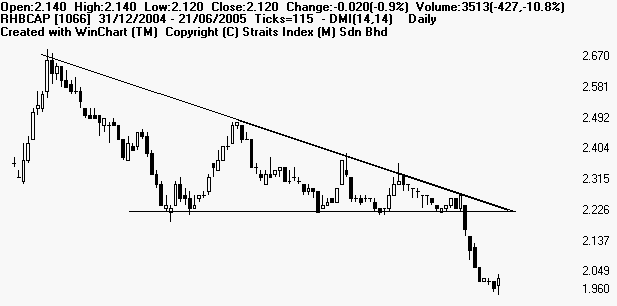There are three types of triangle patterns : Symmetrical triangle, Ascending triangle and Descending triangle.
Symmetrical triangle
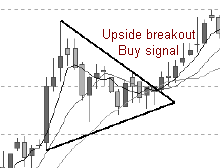
Symmetrical triangle is a period of sideways congestion whereby the series of tops fail to meet the highs of the previous top and a series of bottoms fail to reach the lows of the previous bottom. Lines connecting the tops and bottoms should converge if extended to the left.
This pattern represent a struggle between buyers and sellers, the resolution of which is normally expected to be to the direction of the side of the steepest angle up or down. Symmetrical triangle indicate that buyers and sellers are equally strong and the pattern may be resolved in either direction.
A BUY signal is given when the price breaks above the top edge of the triangle, and a SELL signal if it breaks below the bottom edge. The breakout must be accompanied by a rise in volume.
Examples of Symmetrical Triangles:
Mieco [5001]
Emas Index
Commerz [1023]
Ascending Triangle:
Ascending triangle is a bullish manifestation of the right angle triangle, whereby connecting the prices tops during a period form a horizontal line and the price bottoms during that period form an upward sloping line. If the price rises above the horizontal line, it can indicate a coming rally.
Ascending triangle is manifested in the upward slant of the bottom edge, showing that the sellers are giving up at progressively higher levels.
A BUY signal is confirmed when the breakout occurs on the upside on good volume. The price target is equal to the width of the base of the triangle as measured from the breakout point. Trading volume decreases steadily toward the tip of the ascending triangle, but increases rapidly on the breakout.
Conversely, a SELL signal is confirmed when the breakout occurs on the downside on good volume.
Examples of Ascending Triangles:
Composite Index
Annjoo [6556]
Rhbcap [1066]
Descending Triangle:
Descending triangle is a bearish manifestation of the right angle triangle, whereby connecting the price bottoms during a period to a bear market when some investors recognize that the market is overvalued, and begin to sell their holdings. Tends to be displayed in rallies as volume increases are less than previous rallies.
Descending triangle is manifested in the downward slant of the top edge of the triangle, showing that the buyers are giving up at progressively lower levels.
A SELL signal is confirmed when the price works its way into the apex of the triangle, it can be expected to break down out of the triangle. The downtrend breakout must be accompanied by heavy volume to validate the formation.
Conversely, a BUY signal is confirmed when the price downside breakout at the apex of the descending triangle.
Examples of Descending Triangles:
PWE [8419]
Rhbcap [1066]
Copyright © 1997- 2005 Straits Index (M) Sdn Bhd. All rights reserved.
